

|

|

Volume
3:
No. 3, July 2006
ORIGINAL RESEARCH
The Role of Race and Poverty in Access to Foods That Enable Individuals to Adhere to Dietary Guidelines
Elizabeth A. Baker, PhD, MPH, Mario Schootman, PhD, Ellen Barnidge, MPH, Cheryl Kelly, MPH
Suggested citation for this article: Baker EA, Schootman M, Barnidge E, Kelly C. The role of race and poverty in access to foods that enable individuals to adhere to dietary guidelines. Prev Chronic Dis [serial online] 2006 Jul [date cited]. Available from:
URL: http://www.cdc.gov/pcd/issues/2006/
jul/05_0217.htm.
PEER REVIEWED
Abstract
Introduction
The increase in obesity and disparities in obesity and related chronic diseases across racial and ethnic and income groups have led researchers to focus on the social and environmental factors that influence dietary intake. The question guiding the current study was
whether all communities have equal access to foods that enable individuals to
make healthy dietary choices.
Methods
We conducted audits of community supermarkets and fast food restaurants to
assess location and availability of food choices that enable individuals to
meet the dietary guidelines established by the U.S. Department of Agriculture
(e.g., fruit and vegetable consumption, low-fat options). We used 2000 census
data to assess the racial distribution and the percentage of individuals living
below the federal poverty level in a defined area of St Louis, Mo. Spatial clustering of supermarkets and fast food restaurants was determined using a spatial scan statistic.
Results
The spatial distribution of fast food restaurants and supermarkets that provide options for meeting recommended dietary intake differed according to racial distribution and poverty rates. Mixed-race or white high-poverty areas and all African American areas (regardless of income) were less likely than predominantly white higher-income communities to have access to foods that enable individuals
to make healthy choices.
Conclusion
Without access to healthy food choices, individuals cannot make positive changes
to their diets. If certain eating behaviors are required to reduce chronic disease and
promote health, then some communities will continue to have disparities in critical health outcomes unless we
increase access to healthy food.
Back to top
Introduction
Obesity is one of the leading health concerns in the United States; approximately 65% of American adults are overweight or obese (1,2). Previous studies have found that poor nutrition and physical inactivity are key risk factors in the development of obesity (3-7).
Recent findings indicate that rates of obesity are higher among some racial and ethnic minority groups as well as among lower-income groups. For example, 38% of African Americans are obese,
compared with 27% of Hispanics, 37% of Native Americans, and 21% of the entire U.S. population (8). Data also suggest that lower-income groups have higher rates of obesity than their higher-income
counterparts; this trend is particularly apparent among women (9,10). In addition, there are disparities in
rates of chronic diseases related to obesity. For example, in 2000 the death rate from heart disease among African Americans was 29%
higher than among non-Hispanic whites (11). Similarly, African Americans are twice as likely
as non-Hispanic whites to be diagnosed with diabetes (12).
Previous studies indicate that the etiology of obesity is multifactorial. Although much of the initial work on obesity focused on individual and interpersonal factors, public health practitioners are becoming increasingly interested in the environmental and broader social determinants (e.g., race and ethnicity, poverty) of obesity (13-23).
Several studies have been conducted to examine environmental influences, such as the association between the location of food outlets and the consumption of various types of food. For example, Moreland et al found that more fruits and vegetables were consumed in areas with more supermarkets (17). Other studies have examined the extent to which the location of food outlets is associated with
various area-level factors such as race, ethnicity, or income. These studies have found that lower income and predominantly African American neighborhoods have fewer supermarkets (or longer distances to markets) but more fast food restaurants (18,19,21).
Other researchers have suggested that the ability to make healthy choices is influenced not only by the location of the food outlet but also by the selection of items in the outlet (24). For example, Cheadle et al examined the selection of a broad range of foods within supermarkets and found that increased selection of low-fat and high-fiber foods was associated with healthier dietary
consumption; they did not, however, investigate whether selection differed by area-level factors such as race and ethnicity or poverty rate (20).
Our study reports on the association between location and selection of foods that enable individuals to make healthy choices and racial distribution and poverty rates. We used direct observations through audit tools as well as existing databases (the Web sites of fast food restaurant corporations and U.S. census data). Our analysis techniques allowed us to
examine not only the variance between these areas but also whether the differences were significantly more or less than would be expected based on population density.
Back to top
Methods
We audited supermarkets and fast food restaurants for the availability of healthy food choices.
The data were analyzed using a geographic information system (GIS) and
geographic clustering software. We obtained information on racial and ethnic
distribution and percentage of the population living in poverty from the
2000 U.S. census. We determined whether the area-level characteristics were associated with clustering of supermarkets and fast food restaurants.
Study area
The study area consisted of the city of St Louis, Mo, and the eastern part of St Louis County, Missouri, the area between the Missouri River on the east and Interstate 270 (the outer belt of the St Louis area) on the west. This area is considered by many residents to comprise the urban area of St Louis. This area includes 233 square miles, 220 census tracts, and 912,323 people (25).
Development of audit tools
The audit tools developed for this study build upon previous work (20) and reflect current dietary intake guidelines established by the U.S. Department of Agriculture (USDA) (26). The recommendations include eating a variety of fruits and vegetables each day and selecting from all five vegetable subgroups (dark green, orange, legumes, starchy vegetables, and other vegetables). In addition, the
recommendations suggest eating lean, low-fat, or fat-free meat, poultry, and dairy products. The audit tools were
designed to assess the extent to which the environment — supermarkets and fast
food restaurants — provided individuals with a selection of foods that would enable them to follow these recommendations.
Supermarket audit tool
The supermarket audits were structured to determine the extent to which the selection of foods available in each supermarket enabled individuals to meet USDA recommendations. The fruit and vegetable section of the audit tool was created as a checklist that included each item identified by the USDA’s Continuing Survey of Food Intakes by Individuals (CSFII) as currently being consumed by
adults living in urban midwestern cities (78 total fruits and vegetables). The
checklist provided a place for the auditor to indicate whether each item was available in a fresh, frozen, or canned form in each store.
We used the USDA’s Agriculture Handbook 8 (27) to develop the audit tool for assessing the availability of lean, low-fat, and fat-free meat, poultry, and dairy products. Similar to the fruit and vegetable section of the audit tool, this section was created as a checklist for the auditor to indicate whether each type of lean beef, skinless chicken, or low-fat or
reduced-fat cheese was available in each store. The audit tool also allowed the recorder to identify the availability of fat-free, 1/2%, 1%,
1 1/2%, 2%, and whole milk.
Fast food restaurant audit tool
The fast food restaurant audit tool assessed the extent to which the menu options at each fast food restaurant provided the opportunity for individuals to meet the recommended dietary intake based on the availability and preparation of the foods (e.g., broiled or baked rather than fried).
Fast food restaurants were defined as restaurants where customers place orders at the counter (i.e.,
with no
waitress or waiter available for service). Twenty-six major fast food restaurant chains were audited including
hamburger, sandwich, Mexican, chicken, and pizza chains. All fast food restaurants in this study provided menus through a corporate Web site. A checklist was created based on the menu of each chain (24). Audit tools were designed for each restaurant chain so that all items included on
the corporate menu that would enable customers to meet one of the recommended eating patterns was placed on a checklist. For example, the items on the corporate menu (and thus the checklist) that were identified as providing the opportunity to eat fruits and vegetables may have included a garden salad, a chef salad, or a taco salad, depending on the chain. Each auditor used the
corporation-specific checklist to assess which of the food options that met the recommended dietary guidelines were carried by local branches or franchises.
Conducting audits
Between 2003 and 2004, audits were conducted in person at all stores that were identified by the 2000 business census as either supermarkets or major-chain grocery stores and
had addresses that were geographically located within the study area (N = 81). Each store was audited by two research staff: one observer (who
visually noted all the items) and one recorder (who recorded the items on a
standard data sheet). Each auditor participated in a half-day training session
and followed an auditor for another half day. Using the 78-item fruits and
vegetable checklist, the auditor recorded whether each store carried that fruit
or vegetable and whether it was available fresh, frozen, or canned. Similarly, each auditor looked for all available meat, poultry, and dairy options. The auditors checked the
checklist for each item the supermarket carried; they did not count the number of each item the store
had. (For example, they noted whether there were peaches but not the number of peaches.) This process was chosen because variations in the actual number of peaches (or other items) might reflect purchasing and stocking patterns within the store rather than the availability of an item.
A two-stage process was used to assess the selection of options that met dietary intake recommendations at local fast food restaurants. The first phase entailed stratifying the study area into census tracts by three racial and three poverty groups. Each fast food restaurant was placed within a stratum based on its location. A random sample of two of each type of fast food chain within each
census tract was then audited by telephone. These audits were conducted by auditors who participated in a half-day training session. Once the manager or supervisor of the fast food restaurant agreed to an audit, the auditor went through the checklist of items based on the corporate menu and asked the manager or supervisor to indicate whether each item was available at
the branch or
franchise.
The data were reviewed after 130 fast food restaurants, or approximately half
the sample, had been audited. It was then determined that there were few
differences in the availability of healthier options within chains, regardless
of geographic location or stratum (race or income). Overall, the variance
between restaurants within the same chain was less than 5% for most chains
(ranging from 0% to 5%). The lack of variability from our calls, along with the
possibility of respondent bias, resulted in a decision to score each fast food
restaurant based on its corporate menu. Although the restaurants may have varied more than we ascertained through our sampling and may not have had all of the items from the corporate menu, this method allowed us to give each
restaurant its best possible
rating.
Statistical analysis
Availability of healthy choices
A composite score was created for each supermarket by combining the observed number of different fruits and vegetables available and lean, low-fat, and fat-free meat, poultry, and dairy options. Using the composite score, z scores were calculated for each supermarket. The
z scores, based on the mean availability and standard deviation of all items, allowed comparisons
among supermarkets. Tertiles were created to indicate high, medium, or low availability of fruits and vegetables and low-fat options based on the distribution of z scores.
Each fast food restaurant audited also received a composite score based on
the total number of items available that met dietary guidelines.
The z scores were calculated for each restaurant. Based on the distribution of z scores, ratings were divided into tertiles and labeled high, medium, or low potential for meeting dietary intake recommendations.
2000 census data
To determine racial distribution and poverty rates in the study area, we used 2000 U.S. census data at the census-tract level. Only two racial groups were considered because, according to the U.S. Census Bureau, 95% of the population residing in the study area self-identifies as white or African American. Census tracts were identified as primarily African American if 75% or more of the
population in the area self-identified as African American or as primarily white if 75% or more of the population in the area self-identified as white. All other areas were identified as mixed.
The percentage of the population living below the U.S. federal poverty level
was measured using 2000 U.S. census data. The poverty rate is a measure that seems to be robust across various diseases and levels of geography; it has a link to possible policy implications; and it is comparable over time (28,29). We
grouped poverty rate into three levels: less than 10% of the population living
in poverty, 10% to 19.9% of the population living in poverty, and 20% or more of the population
living in poverty.
Address matching and spatial clustering
The street addresses of the fast food restaurants identified were converted to approximate geographic locations and assigned a latitude and longitude. First, all addresses were preprocessed using ZP4 (Semaphore Corp,
Pismo Beach, Calif) and then address-matched using ArcView 3.2 (ESRI, Redlands, Calif)
with the Redistricting Census 2000 TIGER/Line as the reference files. Unmatched
or questionably matched addresses (scoring lower than 85) were recoded using the Internet-based EZ-Locate system (Tele Atlas
North America, Inc, Lebanon, NH). Of the 32 unmatched addresses, one was matched to the centroid of the ZIP code, one
was matched to the centroid of the ZIP+2 code, one was a near match, and the remaining
were matched at the block-face level.
Spatial clustering of supermarkets and fast food restaurants was determined using a spatial scan statistic performed with the software SaTScan (Martin Kulldorff, Boston, Mass) (28,29). The statistic uses a circular window of variable radius that moves across the map. The null hypothesis was that the rate of fast food restaurants or supermarkets
(the number of businesses expected per 100,000 population) was the same in all
windows. Clusters were defined as areas that had either a lower or higher rate of fast food restaurants or supermarkets than expected. The process of cluster detection was run through 999 Monte Carlo permutations of the data set to identify
combinations of clusters of higher and lower rates of fast food restaurants (or supermarkets). The analyses were purely spatial, with a maximum cluster size of 50% of the population size. A Poisson distribution was assumed. The output provided the most likely cluster as well as several secondary clusters. Data associated with these clusters included the location identifiers, search radius and
center coordinates, standard rate ratio, and a P value based on the log likelihood ratio test for each cluster. The cluster results were mapped in ArcGIS version 9 (ESRI, Redlands, Calif).
The SaTScan method was run eight times using different data and parameters. We assessed separately the spatial clustering of supermarkets and fast food restaurants regardless of the audit results. Next, we adjusted for the underlying racial distribution and poverty rate based on 2000 census data and
determined whether the areas of higher or lower than expected number of supermarkets were still
present. We then examined spatial clustering of supermarkets and fast food restaurants that scored in the highest tertile. We also adjusted these results by the racial distribution and poverty rate to determine whether these factors could explain the spatial clustering.
Back to top
Results
Table 1 provides a summary of the distribution of race and poverty within the 220 census tracts sampled as well as the distribution of supermarkets and fast food restaurants. Eighty-four tracts had less than 10%
of the population living in poverty. Of these 84 tracts, 72 tracts were primarily white, 12 tracts were
racially mixed, and none was primarily African American.
In contrast, of the 83 census tracts in which 20% or more of the population was
living in poverty, two tracts were primarily white, and 47 tracts were primarily African American.
Table 1 also provides information on the number of supermarkets and fast food restaurants ranked in the highest tertile within each of these areas. Eighty-one supermarkets and 355 fast food restaurants were identified in the study area. Of the 26 supermarkets in the highest tertile, 22 were in primarily white census tracts, and none were in primarily African American census tracts, regardless
of poverty rate. Of the 120 fast food restaurants in the highest tertile, 63
were in primarily white census tracts, 53 were in racially mixed census tracts,
and four were in primarily African American census tracts. There were fewer
supermarkets and fast food restaurants that provided the best opportunity to
meet recommended intake in primarily African American communities than in
primarily white communities.
Next we ascertained whether differences in the distribution of supermarket and fast food restaurants were significantly different from what would be expected by chance alone, taking into account population density.
Supermarket clustering
Figure 1 shows the location of the 81 supermarkets in the study area; the area has a rate of 8.9 supermarkets per 100,000 population.
Table 2 identifies the number of possible clusters of supermarkets within the study area. The unadjusted analysis showed no clustering of supermarkets; the most likely cluster showed P = .86. Adjusting for racial distribution and poverty rate resulted in
similar findings: there was no clustering of supermarkets detected in the study area; the most likely cluster showed P = .48.
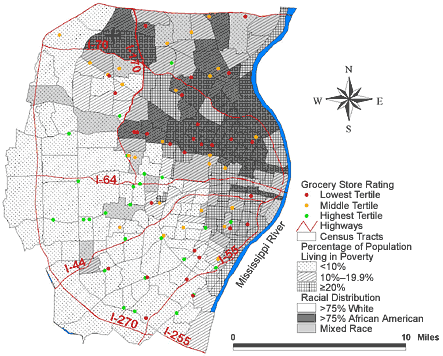
Figure 1. Location of 81 supermarkets and 220
census tracts with underlying racial distribution and poverty rates in the
St Louis, Mo, study area.
Of the 81 supermarkets, 26 were in the highest tertile. Table 2 shows two clusters of supermarkets in the highest tertile, and Figure 2 shows their location. Cluster 1, located in the southern part of the study area, had 23 supermarkets in the highest tertile when only 9.7 had been expected (ratio of observed/expected = 2.4; P = .001). This area included census tracts that were
primarily white or racially mixed.
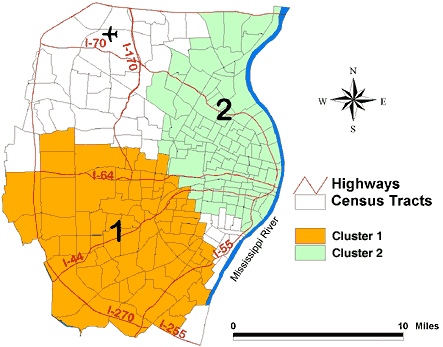
Figure 2. Unadjusted geographic clustering of
supermarkets in the highest tertile, indicating greatest selection of
healthy food markets in the St Louis, Mo, study area. The ratio of observed
to expected number of supermarkets in Cluster 1 is 2.4 (P = .001); in
Cluster 2, 0.0 (P = .003).
Alternately, Cluster 2 was located in the northeastern part of the study area (Figure 2). Nine supermarkets in the highest tertile were expected to be found, but there were no supermarkets in this area (ratio of observed/expected = 0, P = .003). The 311,491 primarily African American and lower-income people in this area were less likely than expected
to have access to supermarkets where healthy choices were available.
Adjusting for the underlying racial distribution and poverty rate for the supermarkets in the highest tertile resulted in no significant clusters (P = .11).
Fast food restaurant clustering
There were 355 fast food restaurants located in the study area with a rate of 39.0 restaurants per 100,000 population
(Figure 3). Table 3 shows that four clusters were identified in the unadjusted analysis; Figure 4 shows their location. In Cluster 1, representing 52 census tracts and 20.6% of the study area population, 73 fast food restaurants were expected, and 31 were observed (ratio of observed/expected = 0.4; P =
.001). The other three clusters indicated a higher than expected number of fast food restaurants but were based on
a much smaller number of census tracts.
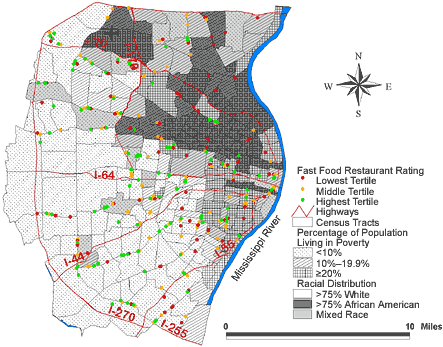
Figure 3. Location of 355 fast food restaurants and
220 census tracts with underlying racial distribution and poverty rate in
the St Louis, Mo, study area.
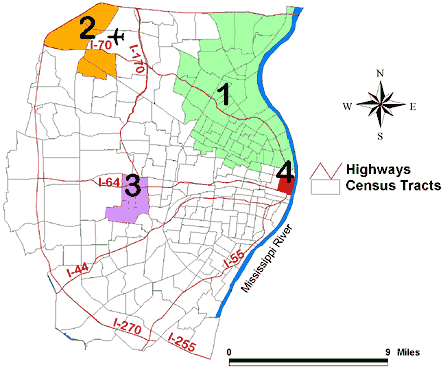
Figure 4. Unadjusted geographic clustering of fast
food restaurants in the St Louis, Mo, study area. The ratio of observed to
expected number of restaurants in Cluster 1 is 0.4 (P = .001);
Cluster 2, 3.4 (P = .001); Cluster 3, 3.2 (P = .02); Cluster
4, 12.0 (P = .03).
After adjusting for the racial distribution and poverty rate, only two clusters remained (Figure 5). Cluster 1 still showed fewer fast food restaurants than expected (ratio of observed/expected = 0.1; P = .004), but the area of Cluster 1 in the adjusted analysis contained only eight census tracts (Table 3). Cluster 2 remained unchanged in size and location after adjustment for racial
distribution and poverty rate (ratio of observed/expected = 3.1; P = .001). Cluster 3 in the unadjusted analysis was no longer statistically significant after adjustment (P = .69). In addition, Cluster 4 in the unadjusted analysis was also no longer significant after adjustment (P = .053).
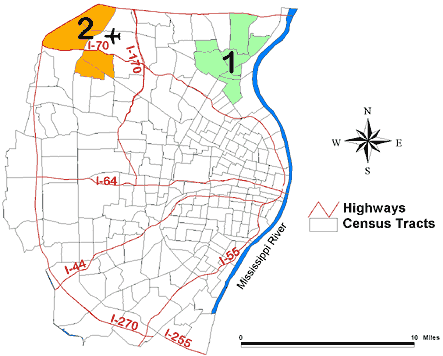
Figure 5. Geographic clustering of fast food
restaurants adjusted for racial distribution and poverty rate by census
tract in the St Louis, Mo, study area. The ratio of observed to expected
number of restaurants in Cluster 1 is 0.07 (P = .004); Cluster 2, 3.1
(P = .001).
Of the 355 fast food restaurants, 120 were considered to be in the highest tertile. Two clusters were detected in the unadjusted analysis (Figure 6). Cluster 1 was located in the northern part of the study area and consisted of 75 census tracts and 31.7% of the study area population. The people in this cluster, primarily African American and lower income, were less likely than expected to have
fast food restaurants in the highest tertile (ratio of observed/expected = 0.3; P = .001). A second, much smaller cluster was located
mainly in the east central part of St Louis County and consisted of 17 census tracts. People in this cluster, primarily white and middle to higher income, were more likely than expected to have access to fast food restaurants that offered healthier
food options (ratio of observed/expected = 3.0; P = .01). After adjustment for racial distribution and poverty rate, no clusters were detected.
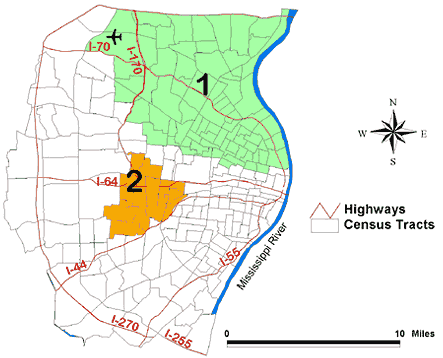
Figure 6. Unadjusted geographic clustering of fast
food restaurants in highest tertile, indicating greatest selection of
healthy food options in the St Louis, Mo, study area. The ratio of observed
to expected number of restaurants in Cluster 1 is 0.3 (P = .001);
Cluster 2, 3.0 (P = .01).
Back to top
Discussion
Over the past several years researchers have made progress in assessing the role that the food environment plays in eating patterns. Previous work has shown a positive correlation between consumption of fruits and vegetables and the location of grocery stores (17,18). Others have found a positive association between what people eat and the selection of healthy options in the supermarket
(20,24). We have also increased our understanding of the neighborhood factors that influence or are associated with differences in the food environment. Researchers have found better access to supermarkets in wealthier communities than
in poorer communities and in white neighborhoods than in African American neighborhoods (17,18). More recent work indicates, however, that it may not be the location of
the food outlets but the selection of food in the outlets that is associated with the ability to meet recommendations on dietary intake (30).
The primary purpose of this study was to determine whether there were
differences in the extent to which populations have access to the
infrastructures — fast food restaurants and supermarkets — necessary to adopt
the eating behaviors recommended by the USDA to reduce chronic disease and
promote health. Our work expanded the inquiry into access to foods that meet
dietary recommendations and neighborhood characteristics. Similar to findings in
other studies (18,19), our results showed that there were differences among
neighborhoods in the location of food outlets. Our results also showed
differences in the availability of healthy food options. Moreover, our
data suggest that the differences are at least partially explained by
differences in racial distribution and poverty rates. These two factors (race
and income) seem to be associated not only with
the location of food outlets but also with the selection of food available that enables individuals to
follow dietary recommendations (as seen in the analysis of the supermarkets and fast food restaurants in the highest tertile).
The data suggest that individuals living in mixed or white high-poverty areas
and in primarily African American areas (regardless of income) are less likely to have access to food outlets than individuals in primarily white, higher-income communities. Also, the food available in mixed or white high-poverty areas and in primarily African American areas is less likely to enable individuals to make healthy choices
than food available in primarily white,
higher-income communities.
This study has several limitations. First, our study is limited to an urban midwestern region, and the findings may be different in other areas nationally and internationally. Second,
our study is limited to an area that has a primarily African American and white
population. The relationships of interest may be different when making
comparisons among racial and ethnic minority communities and between these communities
and white communities. In addition, people may not necessarily eat where they live.
Like other researchers, we examined the number of food outlets within a census tract (18) rather than the distance from a neighborhood center to
the food outlet (19). We made a similar assumption: although it is possible that individuals and groups leave their geographic area to find healthy food options, many individuals, particularly those in lower-income communities, do not have access to cars or public transportation to allow this type of movement regularly. Lack of transportation
was likely among residents living in our study area; according to the 2000
census, almost 50% of residents (48.8%) do not have a vehicle available (25). Thus, the location of food outlets within a census tract seems to be a reasonable indicator of access when conducting an area-level analysis.
Another limitation to our work is that it is possible that the location of food outlets is a function of other geographic factors,
such as proximity to a highway, mall, or airport. It might be useful for future studies to examine the potential influence of these other geographic factors and land-use patterns on food access.
Lastly, there is a compelling and rational economic argument that
supermarkets and restaurants do not sell items that will not be purchased.
Therefore, our findings (differential access to recommended food options) may be
the result of behavior rather than the cause of behavior. It is impossible from
a cross-sectional study such as ours to determine causality. The purpose of our
study was to determine whether there were differences in the extent to which populations have access to the infrastructures necessary to adopt the eating behaviors recommended by the USDA to reduce chronic disease and promote health. Although we found differences according to racial composition and poverty level, our work does not indicate why these differences exist. Moreover, our work does not incorporate many
of the other factors that influence dietary habits or purchasing (e.g., individual knowledge and skills, household size and composition, cultural factors). Future studies, both qualitative and quantitative, would assist in furthering our understanding of these issues.
Regardless of the reasons, some communities have less access than others to
the food necessary for meeting recommended eating behaviors. Without a change in access to
these foods, individuals cannot change their eating behaviors. If indeed these eating patterns are required to reduce chronic disease and promote health, then these communities will continue to have
disparities in critical health outcomes unless we work to change current conditions. We in public health must begin to work collaboratively with our business communities and political structures to make it reasonable, rational, and economically sound to provide equal access to healthy choices.
Back to top
Acknowledgments
The authors acknowledge D Griffith, J Struthers, H Vo, M Kanu, C Smith,
and M Lemes for their
contributions to the work described in this manuscript. We also acknowledge the
American Cancer Society (TURPG-00-129-01-PBP) and the Centers for Disease
Control and Prevention (R06/CCR721356) for their generous support. We thank the
Health Behavior and Outreach Core at the Alvin J. Siteman Cancer Center at
Washington University and Barnes-Jewish Hospital for the services it provided to
this study.
Back to top
Author Information
Corresponding Author: Elizabeth A. Baker, Saint Louis University School of Public Health, Salus Center, 3545 Lafayette Ave, St Louis, MO 63104. Telephone: 314-977-3218. E-mail: bakerpa@slu.edu.
Author Affiliations: Mario Schootman, Department of Medicine and Pediatrics, Washington University School of Medicine, St Louis, Mo; Ellen Barnidge, Cheryl Kelly, Saint Louis University School of Public Health, St Louis, Mo.
Back to top
References
- National Center for Health Statistics. Prevalence of overweight and obesity
among adults: United States, 1999-2002
[Internet]. Hyattsville (MD): Centers for Disease Control and Prevention,
National Center for Health Statistics; 2004. Available from: URL:
http://www.cdc.gov/nchs/products/pubs/pubd/hestats/ obese/obse99.htm.
- Flegal KM, Carroll MD, Ogden CL, Johnson CL.
Prevalence and trends in obesity among US adults, 1999-2000. JAMA 2002;288(14):1723-7.
- Katz DL, O'Connell M, Yeh MC, Nawaz H, Njike V, Anderson LM, et al.
Public health strategies for preventing and controlling overweight and obesity
in school and worksite settings: a report on recommendations of the Task Force
on Community Preventive Services. MMWR Recomm Rep 2005;54(RR-10):1-12.
- Mokdad AH, Serdula MK, Dietz WH, Bowman BA, Marks JS, Koplan JP.
The spread of the obesity epidemic in the United States, 1991-1998. JAMA 1999;282(16):1519-122.
- Weinsier RL, Hunter GR, Heini AF, Goran MI, Sell SM.
The etiology of obesity: relative contribution of metabolic factors, diet and
physical activity. Am J Med 1998;105(2):145-50.
- Jebb SA, Moore MS.
Contribution of a sedentary lifestyle and inactivity to the etiology of overweight and obesity: current evidence and research issues.
Med Sci Sports Exerc 1999;31(11 Suppl):S534-41.
- Must A, Spadano J, Coakley EH, Field AE, Colditz G, Dietz WH.
The disease burden associated with overweight and obesity. JAMA 1999;282(16):1523-9.
- Liao Y, Tucker P, Okoro CA, Giles WH, Mokdad AH, Harris VB, et al.
REACH 2010 Surveillance for Health Status in Minority Communities
— United States, 2001-2002.
MMWR Surveill Summ 2004;53(6):1-36.
- Drewnowski A, Specter SE.
Poverty and obesity: the role of energy density and energy costs. Am J
Clin Nutr 2004;79(1):6-16.
- Baltrus PT, Lynch JW, Everson-Rose S, Raghunathan TE, Kaplan GA.
Race/ethnicity, life-course socioeconomic position, and body weight trajectories over 34 years: the Alameda County Study.
Am J Public Health 2005;95(9):1595-601.
- National Center for Health Statistics. Health, United States, 2002.
Washington (DC): Government Printing Office; 2002.
- Centers for Disease Control and Prevention. National diabetes fact sheet:
United States, 2005. Atlanta (GA): U.S. Department of Health and Human Services, Centers for Disease Control and Prevention; 2005. Available from:
URL:
http://www.cdc.gov/diabetes/pubs/pdf/ndfs_2005.pdf.
- Swinburn B, Egger G, Raza F.
Dissecting obesogenic environments: the development and application of a
framework for identifying and prioritizing environmental interventions for
obesity. Prev Med 1999;29(6 Pt 1):563-70.
- Swinburn B, Egger G.
The runaway weight gain train: too many accelerators, not enough brakes. BMJ
2004;329(7468):736-9.
- Hill JO, Peters JC.
Environmental contributions to the obesity epidemic.
Science 1998;280(5368):1371-4.
- French SA, Story M, Jeffery RW.
Environmental influences on eating and physical activity. Annu Rev Public
Health 2001;22:309-35.
- Morland K, Wing S, Diez Roux A.
The contextual effect of the local food environment on residents' diets: the
atherosclerosis risk in communities study. Am J Public Health
2002;92(11):1761-7.
- Morland K, Wing S, Diez Roux A, Poole C.
Neighborhood characteristics associated with the location of food stores and food service places.
Am J Prev Med 2002;22(1):23-9.
- Zenk SN, Schulz AJ, Israel BA, James SA, Bao S, Wilson ML.
Neighborhood racial composition, neighborhood poverty, and the spatial
accessibility of supermarkets in metropolitan Detroit. Am J Public Health
2005;95(4):660-7.
- Cheadle A, Psaty BM, Curry S, Wagner E, Diehr P, Koepsell T, et al.
Community-level comparisons between the grocery store environment and
individual dietary practices. Prev Med 1991;20(2):250-61.
- Block JP, Scribner RA, DeSalvo KB.
Fast food, race/ethnicity, and income: a geographic analysis.
Am J Prev Med 2004;27(3):211-7.
- Booth SL, Sallis JF, Ritenbaugh C, Hill JO, Birch LL, Frank LD, et al.
Environmental and societal factors affect food choice and physical activity:
rationale, influences, and leverage points. Nutr Rev 2001;59(3 Pt
2):S21-39; discussion S57-65.
- Booth KM, Pinkston MM, Poston WS.
Obesity and the built environment. J Am Diet Assoc 2005;105(5 Suppl
1):S110-7.
- Edmonds J, Baranowski T, Baranowski J, Cullen KW, Myres D.
Ecological and socioeconomic correlates of fruit, juice, and vegetable
consumption among African-American boys. Prev Med 2001;32(6):476-81.
- US. Census Bureau. American fact finder [Internet]. Washington (DC): US. Census
Bureau;2005. Available from: URL: http://factfinder.census.gov.*
- U.S. Department of Health and Human Services, U.S. Department of
Agriculture. Dietary Guidelines for Americans 2005. Washington (DC):
Government Printing Office; 2005.
- U.S. Department of Agriculture. USDA Nutrient Database for Standard
Reference, Release 13. Washington (DC): U.S. Department of Agriculture,
Agricultural Research Service; 2000.
- Krieger N, Chen JT, Waterman PD, Soobader MJ, Subramanian SV, Carson R.
Geocoding and monitoring of US socioeconomic inequalities in mortality and
cancer incidence: does the choice of area-based measure and geographic level
matter?: the Public Health Disparities Geocoding Project. Am J Epidemiol
2002;156(5):471-82.
- Singh GK, Miller BA, Hankey BF, Edwards BK. Area socioeconomic variations
in U.S. cancer incidence, mortality, stage, treatment, and survival,
1975–1999. NCI Cancer Surveillance Monograph Series, Number 4. Bethesda (MD):
Surveillance Research Program, Division of Cancer Control and Population
Sciences, National Cancer Institute; 2003.
- Sturm R, Datar A.
Body mass index in elementary school children, metropolitan area food prices
and food outlet density. Public Health 2005;119(12):1059-68.
Back to top
|
|
